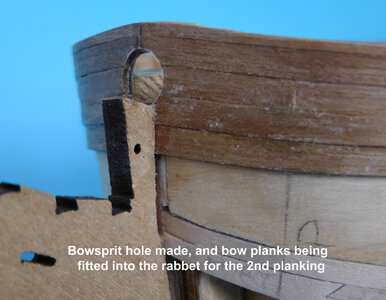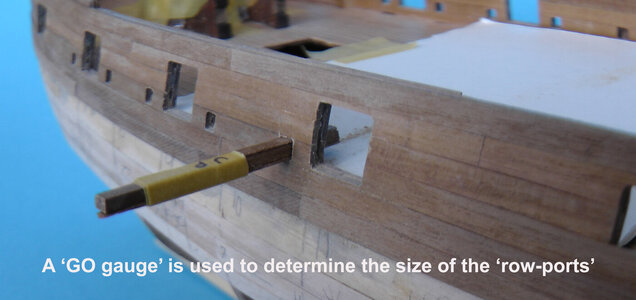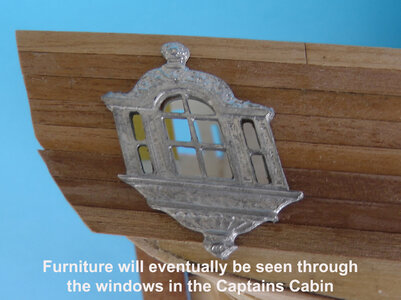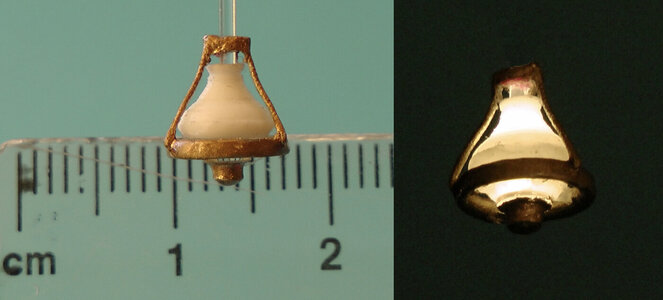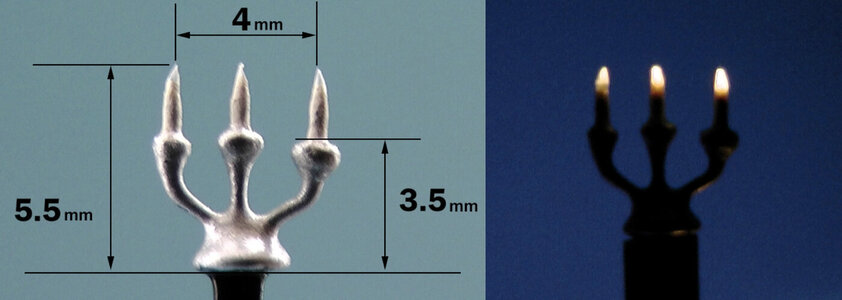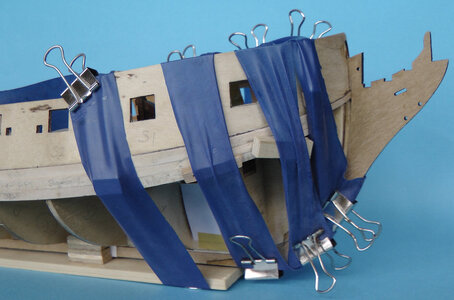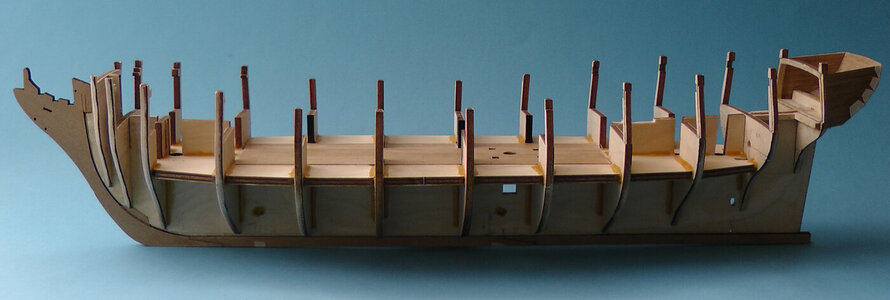Start of 2nd Planking & 'row-ports'
This is the first time I have attempted 2nd planking, and did not realise it would be quite so involved. As a beginner, I have made mistakes, but hopefully, they have been identified, corrected, and written about. Doing this I hope will make it easier for other first time ‘model planners!
To try and make these notes easier to understand they have been broken down into six sections: -
Section A – Planking of Stern Counter Pattern –Page 6
Section B– First planking run – Page 10
Section C – Planking runs above first planking run – Page 27
Section D – Preparation for creating ‘rabbet’ for 2nd planking – Page 37
Section E – Discussing the fitting of Cabin Partitions – Page 46
Section F – Five planking runs below first planking run, preparation of Bowsprit Hole, Gun Port openings and row-ports – Page 47
In
Section F, there are six small square openings on either side of the Gun Port openings on the main gundeck, both port, and starboard. It was not known what these were for, but research discovered they were called ‘row-ports.’
Note 1
Note 1: - Row-ports are for the oars (sweeps) that would be deployed in light or no wind. The ships were designed to cope with the inconsistent airs of the Mediterranean in this respect, as it saved deploying the boats to tow the ship behind (‘Correspondence with Historic Photographs & Ships Section, National Maritime Museum’, May 2022)
There are 125 photographs so there is much to see; several are shown below which may be of interest to members.
